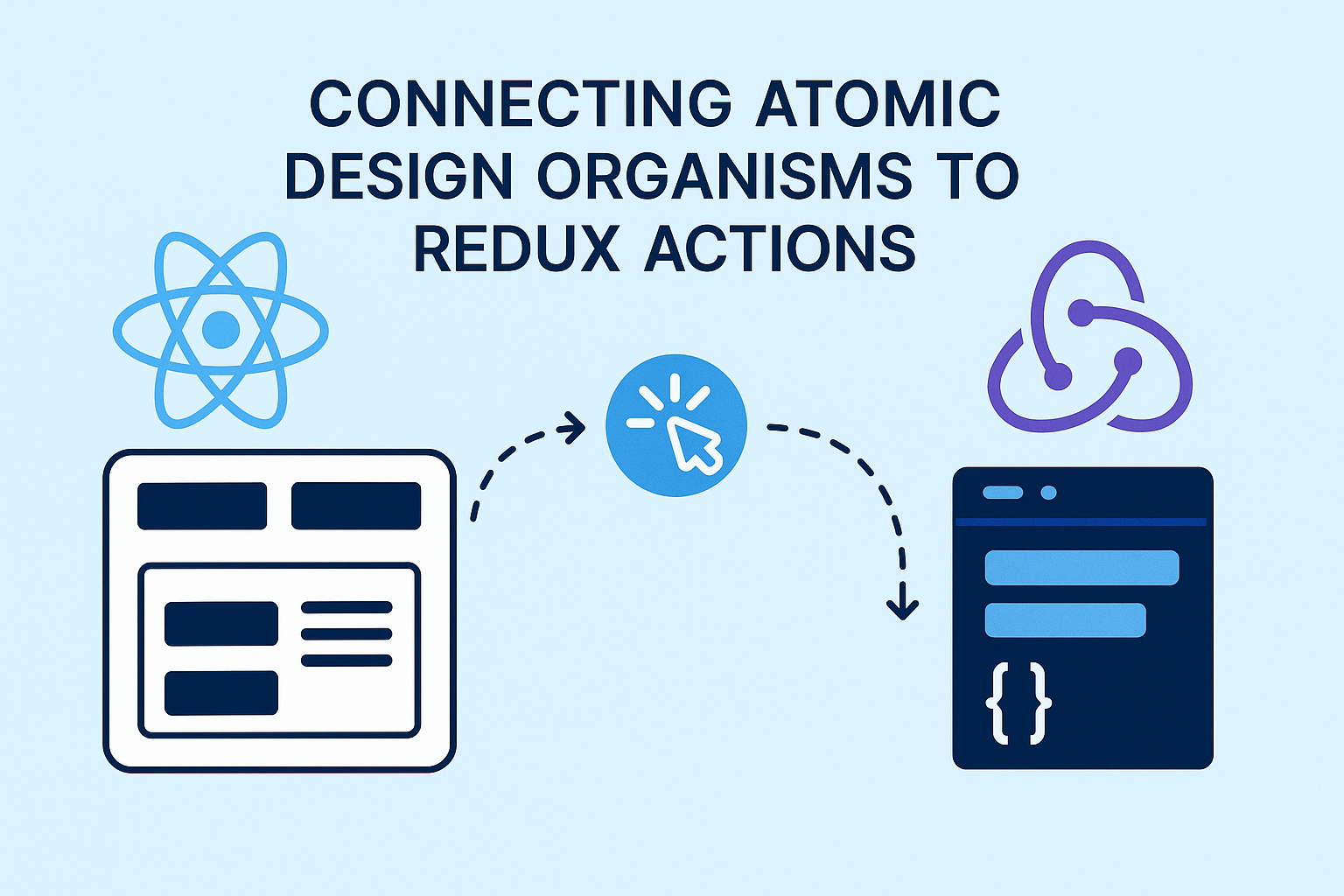
Building scalable React applications often means striking a balance between a modular UI and robust state management. Atomic Design helps organize UI components into a clear hierarchy—atoms, molecules, organisms, templates, and pages—while Redux provides a predictable way to manage application state. But how do you connect user events in an Organism component to Redux actions, without breaking the principles of either pattern? Here’s a practical guide.
Understanding the Roles
Atomic Design Recap
- Atoms: Smallest, indivisible UI elements (e.g., Button, Input).
- Molecules: Groups of atoms working together (e.g., Input + Label).
- Organisms: Relatively complex, reusable UI sections combining molecules and atoms (e.g., FormSection, NavBar).
- Templates/Pages: Higher-level layouts and actual screens[^1][^2].
Redux Recap
- Actions: Plain objects describing state changes.
- Reducers: Functions that handle actions and update state.
- Store: Centralized state container.
- Dispatch: Function to send actions to the store.
Where Should Redux Connect?
Best practice is to connect Redux at the Organism or Page level, not at the lower levels (atoms or molecules). This keeps your smaller components reusable and stateless, while letting complex UI blocks (organisms) handle business logic and state interactions[^3][^4][^5].
Step-by-Step: Connecting Organism Events to Redux
1. Define Redux Actions
Create action creators for the events you want to handle. For example, a login form organism might dispatch a login action.
// actions/authActions.js
export const login = (username, password) => ({
type: 'LOGIN_REQUEST',
payload: { username, password }
});
2. Build the Organism Component
Organisms combine molecules and atoms, and expose event handlers as props to their children.
// organisms/LoginForm.js
import React from 'react';
const LoginForm = ({ onSubmit }) => (
<form onSubmit={onSubmit}>
{/* Assume Input and Button are molecules/atoms */}
<Input name="username" />
<Input name="password" type="password" />
<Button type="submit" label="Login" />
</form>
);
export default LoginForm;
3. Connect the Organism to Redux
Use useDispatch (with Redux Toolkit or React-Redux) or the connect HOC to wire up the organism to the store.
// organisms/LoginFormContainer.js
import React from 'react';
import { useDispatch } from 'react-redux';
import { login } from '../actions/authActions';
import LoginForm from './LoginForm';
const LoginFormContainer = () => {
const dispatch = useDispatch();
const handleSubmit = (e) => {
e.preventDefault();
const username = e.target.username.value;
const password = e.target.password.value;
dispatch(login(username, password));
};
return <LoginForm onSubmit={handleSubmit} />;
};
export default LoginFormContainer;
- Tip: The container pattern is common—your organism is wrapped by a container that handles Redux logic, while the organism itself remains presentational and reusable[^6][^5].
4. Use the Organism in Templates/Pages
Now you can include your connected organism in templates or pages, keeping your state flow clear and your components modular.
// pages/LoginPage.js
import React from 'react';
import LoginFormContainer from '../organisms/LoginFormContainer';
const LoginPage = () => (
<div>
<h1>Login</h1>
<LoginFormContainer />
</div>
);
export default LoginPage;
Best Practices
- Keep atoms and molecules stateless. Pass all event handlers as props from organisms or higher.
- Only connect to Redux at the organism or page level. This avoids unnecessary re-renders and prop drilling[^3][^4][^5].
- Use container components. Separate presentational (UI) and container (logic) components for clarity and reusability.
- Favor hooks (
useDispatch,useSelector) for modern Redux integration in functional components.
Common Pitfalls
- Prop Drilling: Passing too many props down the tree. Use Redux at the right level to avoid this.
- Over-connecting: Don’t connect every component to Redux. Stick to organisms or pages for stateful logic[^3][^5].
- Component Proliferation: Avoid duplicating similar organisms. Keep your design system DRY and consistent[^7].
Conclusion
Connecting events in Atomic Design-based organism components to Redux actions is all about separation of concerns. Let your organisms handle UI composition and event wiring, while containers or connected components handle Redux logic. This keeps your codebase modular, scalable, and easy to maintain.
No comments:
Post a Comment